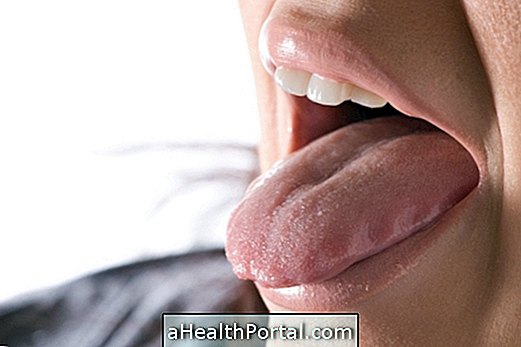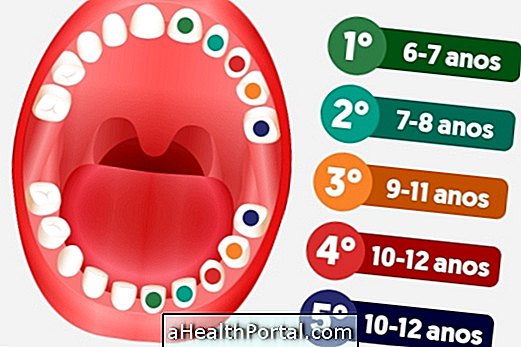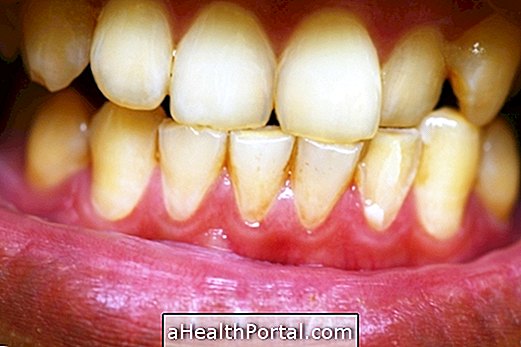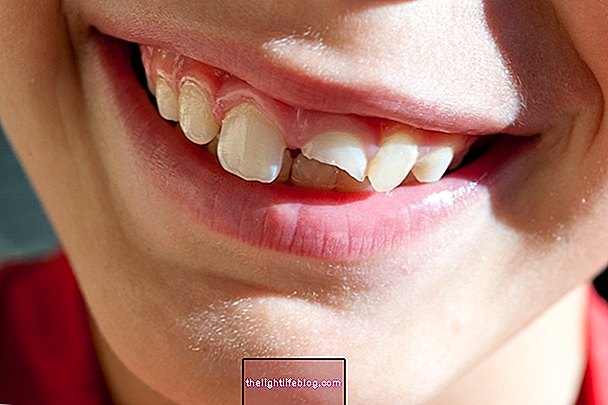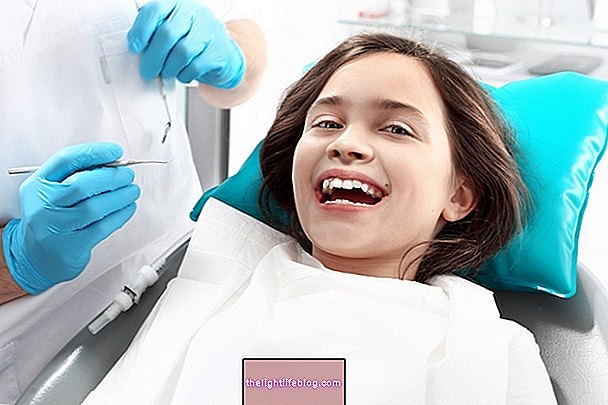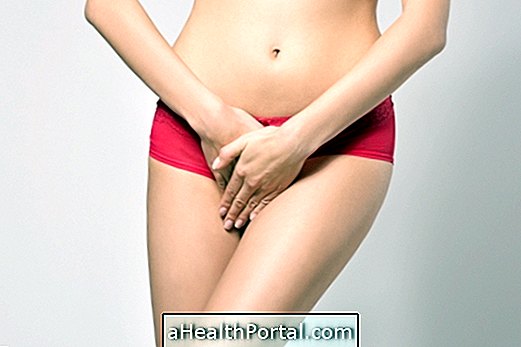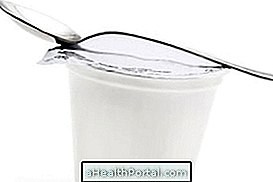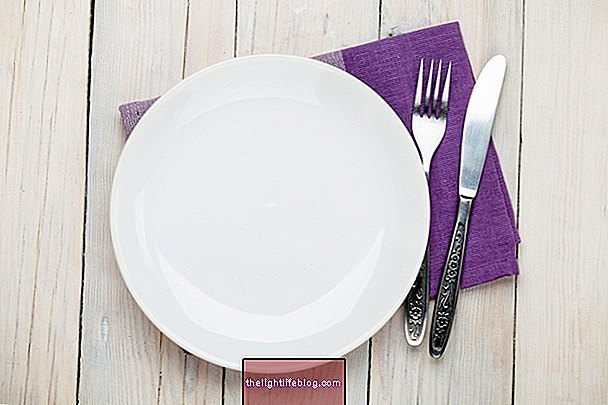A cross-bite is a misalignment of the teeth that, when closing the mouth, one or more teeth of the upper jaw do not align with the lower jaw, getting closer to the cheek or tongue, and leaving the crooked smile.
There are two main types of crossbite:
- Posterior : it is when the top and back teeth close inside the lower teeth;
- Anterior : is when the teeth from top to front close behind the lower teeth.
In addition to the aesthetic problem, cross-bite may also have other negative effects, such as increased risk of cavities and gum disease, mainly due to the greater difficulty in correctly brushing the teeth.
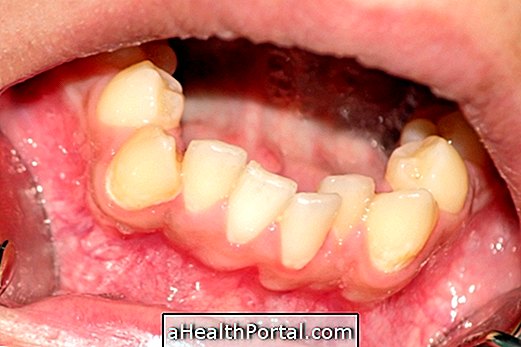
A cross-bite usually appears early in childhood, but does not go away on its own, requiring treatment with an appliance, surgery, or removal of teeth, for example. Thus, if there is a suspicion of this change, even in children, it is important to consult a dentist to confirm the diagnosis and start treatment.
Main forms of treatment
Ideally, treatment for crossbite should be started during childhood or adolescence, when definitive teeth are still growing. However, there are several forms of treatment that can also be used in adults:
1. Use of a palate expander
The palatal expander is a device that is fixed in the roof of the mouth, between the molars, and that expands it, pushing the teeth out. In order for it to work properly you need to have regular appointments at the dentist to gradually increase the size.
This method works best in children because the roof of the mouth is still developing and it is possible to control its size better, however, it can also be used in some adults.
2. Removal of teeth
This technique is most often used in cases where the bite is altered by the influence of the lower teeth. This is because after removing one or more teeth, the dentist creates enough space so that the teeth can grow properly, without affecting the alignment.

3. Use of dental appliance
This is one of the most commonly used forms of treatment, especially during adolescence and adulthood, as it helps to pull the teeth to the correct location and align them. For this, a device is applied on the teeth that make constant pressure to "pull" or "push" the teeth, aligning the bite.
Depending on the degree of bite change and age, this type of appliance can be used between a few months to several years, varying greatly from person to person. Check that other signs may indicate that you need to use the appliance.
4. Surgery
Surgery is the best treatment for adults with a cross-bite because, although it is a more invasive technique, it produces the results with better esthetics. To do this type of surgery, the surgeon breaks the jaw in several parts and then uses small screws and dental appliances to reposition them in the correct place.
How to avoid cavities during treatment
Since most treatments for crossbite used some type of appliance fixed to the teeth it is very important to maintain a proper oral hygiene, to avoid the onset of cavities and even diseases of the gums.
To do this, it is advisable to wash your teeth thoroughly, especially together where the appliance attaches to the tooth, as well as floss between your teeth. Also, avoid eating very sweet foods or that stick easily to the teeth, as they can leave remains more difficult to eliminate and that facilitate the growth of bacteria.
Check how to properly brush your teeth, even using dental appliance.

Possible Causes for Crossbite
There are 3 main types of causes for crossbite, which include:
- Hereditary factors : this happens when there is genetics to have the jaw bone wider than the upper one, causing the teeth to be misaligned;
- Delayed tooth growth : causes the top and bottom teeth to grow at different times, making them more distant;
- To suck on the finger : this activity can cause the sky of the mouth to develop less, getting smaller than normal and misaligning the teeth;
In addition, when there is an anatomic problem in the nose or throat, such as enlargement of the tonsils, for example, the child can breathe through the mouth and when this happens the tongue is constantly raised and placed in the roof of the mouth, the development of the jaw, causing the misalignment of the teeth.
What are the possible complications
When the proper treatment for crossbite is not done, there may be several complications, which vary according to the degree of alteration of the dental alignment:
- Excessive wear of the teeth and gums;
- Frequent accidental cheek bites;
- Increased risk of cavities and gum disease;
- Pain in the region of the neck and shoulders;
In some cases, the cross-bite may even cause frequent headache, which is especially due to the constant contraction of the jaw muscle, which can also be known as bruxism, and which becomes very tense and painful, radiating pain to the head. Learn more about bruxism and how to relieve it.

